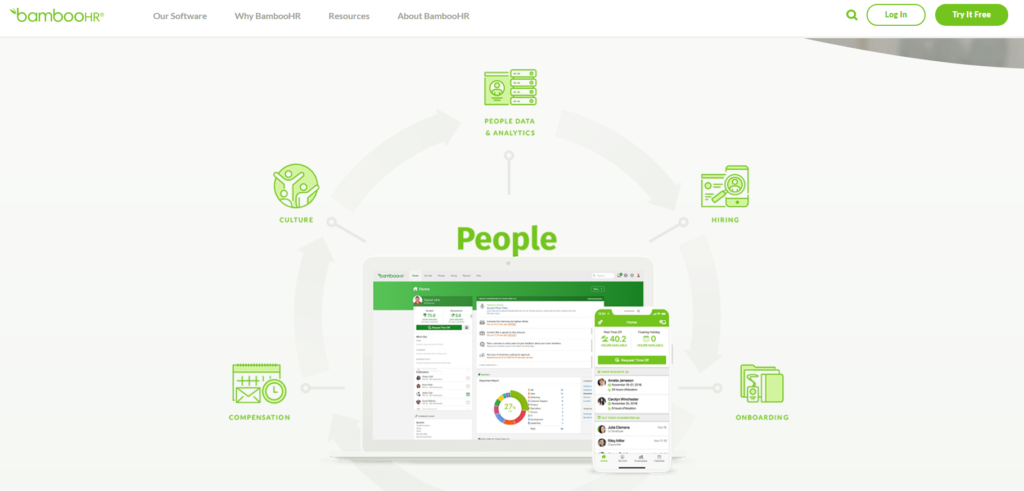At first glance, it might be hard to tell the difference between exempt and non-exempt employees. However, they are terms all employers should be more than familiar with if they want to make sure they’re compliant with regulations and compensating their employees properly.
If you’re working with an exempt employee, they are not entitled to overtime pay. The Fair Labor Standards Act or FLSA makes it so.
It doesn’t matter whether you’re a young startup still figuring out the employment process or if you’re an established enterprise. Being familiar with the ins and outs of exempt and non-exempt employee guidelines is an absolute must.
This guide covers the difference between exempt and non-exempt employees, why they’re so important, how you can make sure you comply, and some of the most common mistakes to avoid.
Why Does The Difference Between Exempt vs. Non-exempt Employees Matter?
Before we get into the importance of knowing the difference between exempt and non-exempt employees, let’s get clear on what each term means.
Exempt Employees: Exempt employees aren’t covered by Fair Labor Standards Act protections. Typically, administrative and management roles fall in this category. Exempt employees are usually salaried and need to earn a minimum of $684 weekly for their work. (Note that the Department of Labor has proposed new rules that would dramatically increase the salary threshold during 2024, but the changes had not gone into affect when this post was published)
Non-Exempt Employees: This type of employee is usually paid on an hourly basis, and if they need to work more than 40 hours, they’re entitled to being paid overtime. Non-exempt employees are also protected by minimum wage laws. As an employer, you can’t pay them less than your state’s designated minimum wage limit.
Why does all this matter? Well, their specific definitions are pretty self-evident. In short, as an employer, you don’t want to break any employment laws that might put you in a compromising position.
Being fair to your employees and paying them what they’re due, whether they’re classified as exempt or non-exempt employees, will help you stay in business and experience higher employee satisfaction.
Moreover, correctly classifying employees exempt or non-exempt helps you identify what benefits your employees are entitled to.
What Does Success Look Like?
Once you know the difference between exempt and non-exempt employees, you’re better equipped to assign duties and designate benefits accurately. But most importantly, you’ll be sure you’re complying with employment laws.
You’ll also have peace of mind knowing your employees are classified correctly. Once you’ve correctly identified whether your employees are exempt or nonexempt, you should add it to your employee contracts.
You’ll also create a better working environment with generally higher employee satisfaction once you’ve correctly classified employees. You’ll also lessen your chances of dealing with serious employee complaints and lawsuits that might be made possible if you aren’t taking the time to classify every employee correctly.
One Secret Weapon To Manage Employee Classifications

The HR department is best equipped to handle exempt and non-exempt employee classification. However, your human resources department likely already has its hands full with everything else it needs to manage.
One of the best and easiest ways to ensure employee classifications is through HR software that takes care of the entire employee lifecycle. Enter BambooHR, an employee management system, HR, and onboarding solution built to help you manage just about every step of the employee lifecycle.
BambooHR provides tools for everything from onboarding, employee contracts, analytics, culture management, and compensation tools (which come in handy with the exempt and non-exempt specifications).
While BambooHR can serve a variety of different industries, it’s specially built to ensure small and medium-sized businesses are getting the most out of the employee onboarding and classification process. You can head here to learn more about everything BambooHR has to offer.
4 Essential Strategies For Managing Exempt and Non-exempt Employees
Here are some strategies to assist with managing the exempt and non-exempt employee classification process.
Get Familiar With Exemption Subcategories
While the differences between exempt and non-exempt employees are pretty clear cut, there are subcategories you should pay attention to and be aware of.
One of the best ways to do this is by visiting the Department of Labor’s website and reading up on the Fair Labor Standards Act. Not only does it list the specifications for exempt vs. non-exempt employees, but it also goes into detail about the proper way to track employee records, federal wage garnishments, direct care workers, and even the specifics of overtime pay.
The site also provides printable fact sheets and interactive online tools and presentations to help you inform your stakeholders about overtime pay requirements.
For instance, there are a few different types of exempt employee subcategories. Here’s a quick rundown of each of them according to the FLSA:
Professional exemption: To be classified under professional exemption status, employees usually need to be responsible for job duties that require higher education. This can also apply to employees that bring unique artistic or creative skills to fulfill a job.
Administrative exemption: For an administrative exemption, employees must be handling office work that helps manage the business. They’re usually in charge of making important business decisions that affect the company’s overall direction.
Executive exemption: To be eligible for an executive exemption, the person needs to manage two or more employees and also be part of the employee hiring process. Usually, executive exemptions apply to employees making serious business decisions that affect the company as a whole.
Outside sales exemption: If a person’s main job is to make sales for the company, or they’re in charge of securing lucrative contracts and need to travel for them, then they may qualify for the outside sales exemption.
Computer-related exemption: A computer-related exemption is pretty straightforward. Is the employee’s primary role closely tied to computer tasks? Then they might qualify for the computer-related role exemption.
STEM exemption: Certain jobs in science, technology, engineering, and mathematics can qualify for the STEM exemption.
Before making any final moves, make sure to check what the exemption rules are in your state. They can vary from state to state. What might apply in one state might be slightly different than in another.
Use Software To Streamline The Process
Using employment software is increasingly becoming a must-have for just about any business seeking growth, sustainability, and organization at scale. To manage exempt and non-exempt specifications that are different for each of your employees, using software specifically designed to help you take care of the process is an absolute must if you want to stay compliant, competitive, and organized.
Onboarding the correct software for your type of business can take some shopping around. Ideally, your employee management software should integrate well with the software and systems you’re already using.
This means you should look through the integration options your software has or any onboarding support it provides. It’s also important to determine whether you want software to take care of the entirety of your employee lifecycle or if you’re in the market for employee management software that specializes in the onboarding process.
In short, finding the right software can help you correctly classify employees at scale while staying compliant as laws and regulations change.
Manage Each Employee Category Accordingly For Optimal Performance
Say you can correctly classify each employee and compensate each accordingly while making sure you’re compliant with employment laws. What then? In short, the next thing to do is to make sure you’re motivating and managing each type of employee accordingly for greater productivity.
What exempt employees respond to as far as workplace motivation might not be what non-exempt employees are more receptive to.
In practice, this might mean creating different incentives for exempt and non-exempt employees. For example, this can be ensuring non-exempt hourly employees are always equipped with the resources they need to do their job well.
It might also mean that you provide them development opportunities to learn skills that can garner upward mobility within the company. Though it’s a given, ensuring your hourly employees are always correctly compensated for any regular and overtime hours worked goes a long way. Sometimes payroll mistakes happen. But staying on top of payroll with accurate hourly data for each employee helps mitigate conflict.
How about exempt employees? Motivation for exempt employees tends to work better when it’s intrinsically motivated. Exempt employees are not motivated by overtime pay (as they aren’t eligible for overtime) or external rewards.
Properly motivating a fleet of exempt employees may look like letting them tackle challenges that are self-rewarding, emphasizing job satisfaction and security, or performance-based bonuses. Equip them to feel comfortable and supported in learning new skills that might lead to a raise or promotion.
Better yet, incentivizing exempt employees with profit-sharing strategies can be a profoundly effective way to emphasize not only productivity but creativity, drive, and leadership.
Time Track Your Non-exempt Employees
Time tracking is a crucial part of ensuring you manage non-exempt employees accordingly. Without accurately tracking non-exempt employee’s time, you won’t be sure when exactly they’re eligible for overtime. Knowing when they’ve crossed the 40 hours threshold is that much harder.
Accurately time tracking employees can be done in several ways. What’ll largely determine the best process for this is how big your company is. There are lots of ways to track employees, whether they work in-house or are working remotely.
For instance, you can use time tracking software to track what projects employees are working on, what hours they’re working, and how many hours they’re putting into their tasks. However, if you’re operating in an industry that’s more labor-intensive, time tracking can be as easy as setting up a system where employees can manually punch in and punch out.
Essentially, being careful about tracking your non-exempt employee’s hours can ensure you’re keeping accurate payroll records that comply with employment legislation.
Most Common Mistakes Made About Exempt and Non-exempt Employees
Knowing what not to do can be as valuable as knowing what to do. Here are a few pointers that can help you stay compliant with the employee classification process.
Not Including Employee Classifications In Contracts: You should be including employee classifications in all employee contracts. Doing this can save you potential lawsuits down the road. It also ensures your employees are aware of their classification and what that means for them.
Ignoring The Important Differences Altogether: While clearly outlining the differences between your exempt and non-exempt employees might seem like something you can ignore, you shouldn’t. Ignoring such an important distinction between your employees can be more troublesome than going out of your way to ensure you’re getting this classification correct.
Failing to Stay On Top of Regulatory Changes: For example, the minimum amount an employee must make per week to be considered exempt is likely to change in 2024. Currently, the salary threshold is $684 per week, but if the proposed rules are finalized, the new threshold will be $1,059 per week. Employers who fail to update their classifications based on the new rules could find themselves in hot water with the law.
It’s details like these that should stay at the forefront of your employee onboarding and contract drafting process. It goes a long way in saving you employment headaches and confusion down the road.
I hope this guide helps you learn more about employee classifications and how to handle them. If you have questions or aren’t sure if you’re in compliance, consult a lawyer for more information.




